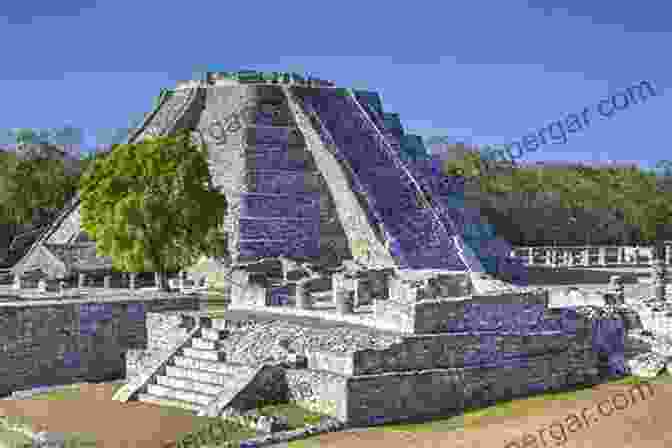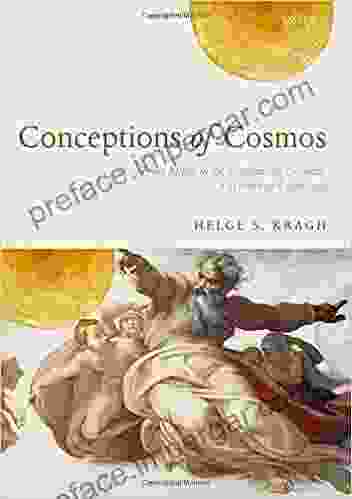Unraveling the Maya Enigma: An Enthralling Journey into the Demise of an Ancient Civilization

Deep within the verdant jungles of Central America lies a testament to a once-thriving civilization: the Maya. Their towering pyramids, enigmatic glyphs, and sophisticated art have captivated scholars and adventurers alike for centuries. However, behind this facade of wonder lurks a mystery that has haunted historians – what caused the Maya civilization to collapse?

4.4 out of 5
| Language | : | English |
| File size | : | 161 KB |
| Text-to-Speech | : | Enabled |
| Screen Reader | : | Supported |
| Enhanced typesetting | : | Enabled |
| Word Wise | : | Enabled |
| Print length | : | 12 pages |
| Lending | : | Enabled |
In "An Essay On The Collapse Of Mayan Civilization," a comprehensive and captivating work, author David Webster delves into this enigmatic subject, offering a fresh perspective on one of the most intriguing historical puzzles of all time.
The Zenith of Maya Civilization
Before exploring the causes behind their downfall, it is essential to understand the extraordinary heights achieved by the Maya. Around 250 CE, the Maya civilization emerged from humble origins in the southern lowlands of Mesoamerica, gradually expanding its influence across a vast region encompassing what is now Guatemala, Belize, southern Mexico, and the western parts of Honduras and El Salvador.
Maya culture flourished during the Classic period (250-900 CE),a time of unparalleled artistic and intellectual achievements. They developed a sophisticated writing system, constructed monumental architecture, and made significant advances in astronomy and mathematics. The Maya also possessed a complex social hierarchy, elaborate rituals, and a profound understanding of the natural world.
The Unraveling: Signs of Decline
However, by the 9th century CE, the once-prosperous Maya civilization began to unravel. Evidence of their decline is scattered throughout the archaeological record, painting a grim picture of social collapse, environmental degradation, and political fragmentation.
Abandoned cities dotted the landscape, their once-magnificent structures now crumbling into ruins. Ceramic production declined, indicating a disruption in trade networks. The once-meticulous irrigation systems fell into disrepair, leading to widespread drought and crop failures.
Climate Change and Environmental Factors
Scholars have proposed various theories to explain the Maya collapse, and climate change emerges as a compelling culprit. During the Classic period, the Maya region experienced an extended period of drought, possibly caused by a shift in precipitation patterns. This prolonged drought devastated agriculture, leading to widespread famine and disease.
Deforestation, a result of agricultural expansion and construction projects, exacerbated the environmental crisis. The loss of vegetation disrupted watersheds, further contributing to drought conditions and soil erosion.
Political and Social Upheaval
In addition to environmental factors, political and social instability played a significant role in the Maya collapse. Warfare between rival city-states became increasingly common during the late Classic period, depleting resources and weakening the fabric of Maya society.
As environmental stresses mounted, competition for dwindling resources intensified. Social hierarchies crumbled, and inequality became more pronounced. The inability of the ruling elite to effectively address the challenges facing their people further contributed to the civilization's demise.
The Role of Warfare and Foreign Invaders
Warfare and the arrival of foreign invaders have also been implicated in the Maya collapse. Archaeological evidence suggests that some Maya cities were attacked and burned, indicating violent conflicts. However, the extent to which warfare contributed to the overall collapse is still a matter of debate.
The arrival of warrior groups from central Mexico, such as the Toltec, may have also played a role in destabilizing Maya society. These outsiders brought with them new ideologies and technologies, potentially disrupting existing political and social structures.
Cultural and Religious Factors
Beyond environmental and political factors, cultural and religious beliefs may have also contributed to the Maya collapse. Some scholars have suggested that a widespread loss of faith in the Maya elite and their gods led to a decline in social cohesion and a breakdown in traditional practices.
Political and religious leaders, once seen as intermediaries between the Maya people and the divine, may have lost their authority as the civilization faced insurmountable challenges. This loss of legitimacy could have further weakened the fabric of Maya society.
Epilogue: Lessons from the Maya Collapse
The Maya civilization serves as a poignant reminder of the fragility of human societies and the profound effects that environmental, political, and cultural factors can have on their survival. As we face challenges such as climate change, resource depletion, and social inequality in our own time, we can draw valuable lessons from the Maya collapse.
By understanding the complex interplay of factors that contributed to their demise, we can strive to build more resilient and equitable societies that can withstand the challenges of the future.
The collapse of the Maya civilization remains a tantalizing mystery, a testament to the complexities of human history. In "An Essay On The Collapse Of Mayan Civilization," David Webster masterfully weaves together archaeological evidence, historical accounts, and scientific analysis to present a comprehensive and engaging exploration of this enigmatic event.
This captivating work not only sheds light on the Maya's extraordinary achievements but also provides valuable insights into the vulnerabilities of human societies. By studying the Maya collapse, we can gain a deeper understanding of our own place in history and the challenges that lie ahead.
4.4 out of 5
| Language | : | English |
| File size | : | 161 KB |
| Text-to-Speech | : | Enabled |
| Screen Reader | : | Supported |
| Enhanced typesetting | : | Enabled |
| Word Wise | : | Enabled |
| Print length | : | 12 pages |
| Lending | : | Enabled |
Do you want to contribute by writing guest posts on this blog?
Please contact us and send us a resume of previous articles that you have written.
 Book
Book Novel
Novel Page
Page Chapter
Chapter Text
Text Story
Story Genre
Genre Reader
Reader Library
Library Paperback
Paperback E-book
E-book Magazine
Magazine Newspaper
Newspaper Paragraph
Paragraph Sentence
Sentence Bookmark
Bookmark Shelf
Shelf Glossary
Glossary Bibliography
Bibliography Foreword
Foreword Preface
Preface Synopsis
Synopsis Annotation
Annotation Footnote
Footnote Manuscript
Manuscript Scroll
Scroll Codex
Codex Tome
Tome Bestseller
Bestseller Classics
Classics Library card
Library card Narrative
Narrative Biography
Biography Autobiography
Autobiography Memoir
Memoir Reference
Reference Encyclopedia
Encyclopedia Duane E Haines
Duane E Haines Domenico Amirante
Domenico Amirante Kevin Nealon
Kevin Nealon Henry Wiencek
Henry Wiencek Jeanette Kern
Jeanette Kern Dmitry S Gorbunov
Dmitry S Gorbunov Xin Zhang
Xin Zhang Hirbea Radu
Hirbea Radu Dr Christine Hefti
Dr Christine Hefti Dwight W Hoover
Dwight W Hoover Thomas Laird
Thomas Laird Dorri Steinhoff
Dorri Steinhoff Richard Warren Rappaport
Richard Warren Rappaport Ebenezer Howard
Ebenezer Howard Edna Mae Burnam
Edna Mae Burnam Julian Jeffs
Julian Jeffs Don Roley
Don Roley Douglas London
Douglas London Gary Null
Gary Null Doug Stanton
Doug Stanton
Light bulbAdvertise smarter! Our strategic ad space ensures maximum exposure. Reserve your spot today!

 Bret MitchellMolecular Biology and Pathogenesis of Peste des Petits Ruminants Virus: An...
Bret MitchellMolecular Biology and Pathogenesis of Peste des Petits Ruminants Virus: An... E.E. CummingsFollow ·13.5k
E.E. CummingsFollow ·13.5k Cody BlairFollow ·11.3k
Cody BlairFollow ·11.3k Cooper BellFollow ·12.3k
Cooper BellFollow ·12.3k Dallas TurnerFollow ·8.3k
Dallas TurnerFollow ·8.3k Jacques BellFollow ·7.4k
Jacques BellFollow ·7.4k Earl WilliamsFollow ·12.8k
Earl WilliamsFollow ·12.8k Chase SimmonsFollow ·19.9k
Chase SimmonsFollow ·19.9k Alan TurnerFollow ·16.2k
Alan TurnerFollow ·16.2k

 Donovan Carter
Donovan CarterUnveiling the Tapestry of Western Civilization:...
: Step into the annals of Western...

 Pablo Neruda
Pablo NerudaUnveil the Secrets: The Welsh Murder Mysteries
Prepare to be captivated as...

 Benji Powell
Benji PowellNot Without Our Consent: Lakota Resistance to...
In the mid-20th...

 Ryan Foster
Ryan FosterUncover the Heroic Exploits of U.S. Navy Special Warfare...
The annals of modern warfare are replete...

 Gage Hayes
Gage HayesPlan to Provide Quality Care for All While Saving...
The healthcare...

 Felix Carter
Felix CarterUnveiling the Timeless Wisdom of Machiavelli: The...
Niccolò...
4.4 out of 5
| Language | : | English |
| File size | : | 161 KB |
| Text-to-Speech | : | Enabled |
| Screen Reader | : | Supported |
| Enhanced typesetting | : | Enabled |
| Word Wise | : | Enabled |
| Print length | : | 12 pages |
| Lending | : | Enabled |










